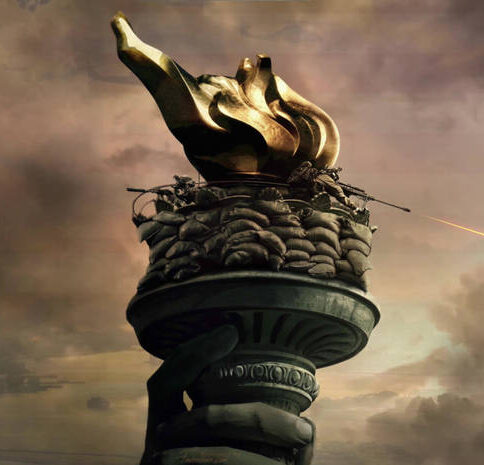Alex Garland created Civil War as a cautionary tale against the grotesque violence associated with war. The film focuses on a domestic conflict in the US, and manages to remain apolitical in a very divided current political climate. Instead, the film can only be viewed as being anti-war.
As literalized through the dissociated photographers, Garland clearly wants to emphasize the neutrality of the viewer in the armed conflict. When there is no side to root for, this war movie quickly turns into a horror movie. In the majority of the combat scenes, we, the audience, don’t even know what side is which. Chaos is a recurring theme, alongside extreme brutality, and danger. It is a story that’s intensity makes you hold your breath for the entire two hour duration. Anything can happen, and the principal characters are not safe. Garland also very realistically includes a large portion of the population doing their best to ignore reality in an attempt to hold on to their normal lives. Meanwhile, the rest of the population is caught in anarchy and instability.
One major point of the movie, that I found poignant, is to highlight the desensitization that Americans have towards armed conflict in today’s day and age. Showing war as an inescapable threat in their own home, Garland creates a sense of urgency for Americans who find themselves so disconnected with real civil unrest. In doing so, he depicts a very realistic version of multiple US cities ravaged by war.
Overall, the film kept me constantly entertained and on-edge. I found Alex Garland’s depiction of a US civil war to be distressingly realistic. In particular, Jesse Plemons has a scene so lifelike that it is easily one of the scariest movie scenes I have ever witnessed. Many of the characters are underdeveloped, but this does not ruin the movie by any means. The movie is more about the world created by the war than the characters themselves. The film successfully serves as an impactful, dire reminder of the devastating consequences of civil instability.
7/10






